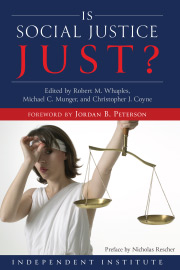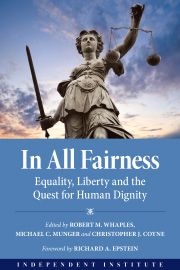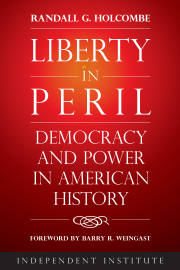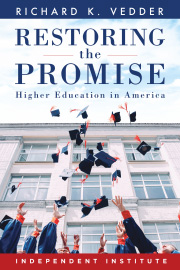Wind Subsidies Are Rising…
New data recently released by the Energy Information Administration (EIA) shows a decrease in wind power production in 2023. Despite record highs in installed wind capacity and continually rising subsidies production is falling.
Thanks to these subsidies, including the longstanding Production Tax Credit (PTC) and Investment Tax Credit (ITC) and the extensions that these credits received in the Inflation Reduction Act (IRA), subsidies for wind power have seen a dramatic increase over the last decade. The IRA extended these credits through 2025, and replaces them with the new, but similar, Clean Energy PTC and Clean Energy ITC through 2032. It also added provisions to provide even larger subsidies for projects that meet “Environmental Justice” requirements. All of this together will maintain and increase both the scope of subsidies for wind and the impact that those subsidies have on the overall market for electricity.
Will this money do any good for the power grid? Will added investment in renewable sources, particularly wind, lead to any increase in the amount of wind power generated? And will that capacity increase or decrease the resiliency of the grid?
The answer to all of the preceding questions is an emphatic “no,” and recent reality bears this out.
The highest installed wind capacity on record was last year, with nearly 150 gigawatts of installed wind capacity in the US.
Even with this record capacity last year, there was also a decline in power generated from wind for the first time. There was 2.1 percent less wind power generated in 2023 than in 2022. This was in part due to slower wind speeds that year, an inherent flaw of wind power. The intermittency of the source also means that sometimes wind power is unavailable when demand is high, but available when it is not, which can also result in less wind power being used.
These aren’t problems that subsidy dollars can solve. They’re inherent to the technology. Despite this, lawmakers have continually tried throwing money at the problem. From 2016 to 2022, the federal government spent approximately $18.7 billion on subsidies for wind power alone. This is a massive amount of money. It’s even more considerable given that wind’s intermittency heavily limits its benefit to reliability.
During that period, wind subsidies were much higher than those for any of the conventional power sources: natural gas, coal, and nuclear. Specifically, the wind subsidies were about 2.5 times greater than both coal subsidies and refined coal subsidies and greater than both coal and refined coal subsidies combined. The wind subsidies were also about double the subsidies for natural gas and petroleum liquids and about 6.5 times greater than nuclear subsidies.
Renewables received 46 percent of overall power subsidies despite constituting a very small portion of overall power generation.
These aren’t subsidies per kilowatt hour of generation. It’s total subsidies. If it were per kilowatt hour of generation, the disparity would be even more extreme given how much more output conventional sources have. To be clear, policymakers shouldn’t be increasing the subsidies for reliable sources to account for this disparity. The way to fix power markets is to subsidize everything less (ideally not at all). The solution to grid reliability problems is certainly not to subsidize the least reliable sources the most.
Decreasing wind generation makes wind’s power production limitations more obvious. It also emphasizes what many reliability advocates have been saying for years: government meddling in electricity markets in favor of unreliable sources will have consequences for reliability as money is funneled away from what works and toward what does not.
As a general matter, lawmakers should stop subsidizing energy sources. To protect reliability, lawmakers should look to repeal the IRA extensions of wind and solar tax credits as a first step toward repairing the damage that these subsidies have done to electricity markets.
This article was originally featured on Catalyst. You can read the original here.


















